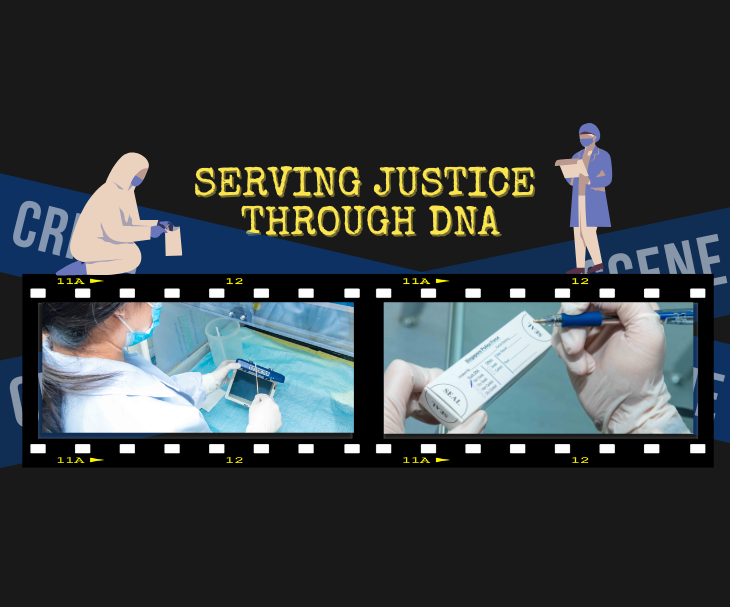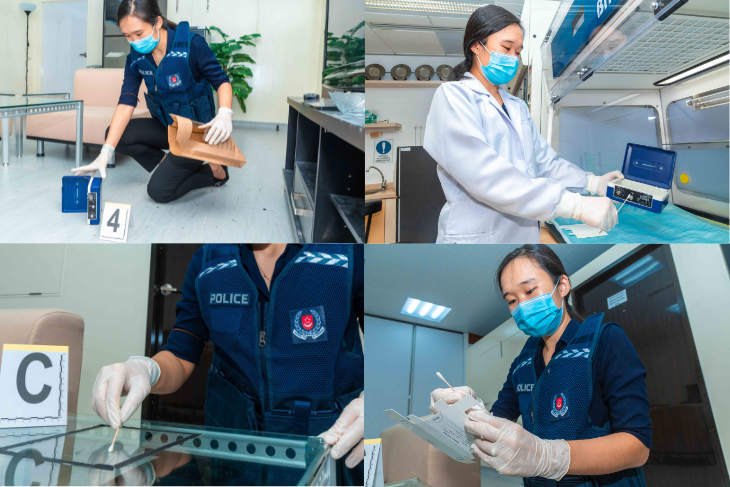
A 12-year-old victim was raped, and it would be another 12 years later before her rapist was caught.
With no CCTV footage and no eyewitnesses, Police were unable to establish the perpetrator’s identity when the rape happened in 2002.
Only when Lee Ah Choy was arrested in 2014 for stealing from his employer, did Police manage to link him to this rape case. The DNA sample taken from Lee for the theft case matched the sample taken from the rape scene and the victim’s body.
An Emotional Roller Coaster to Justice
Deputy Superintendent of Police (DSP) Jagathiswari Jaganathan, Officer-in-Charge, Special Victims Unit, Woodlands Police Division, led the prosecution of Lee.
“He initially denied all the allegations, till he was confronted with the DNA evidence,” said DSP Jagathiswari. “He then admitted that before the rape, he observed the victim on multiple occasions at the void deck of her home as he liked her. He claimed that the sexual intercourse was consensual and that he would claim trial.”

DSP Jagathiswari checking a piece of evidence. PHOTO: Phoebe Leow
With more than 15 years of experience investigating sexual crimes, DSP Jagathiswari knew she had an uphill task preparing the victim to testify in court.
“I was not the investigation officer 12 years ago. I don’t know how the victim was coping and how this case affected her. Most sexual crime victims wish to move on and forget about the incident,” said DSP Jagathiswari, noting the challenges.
As expected, the victim expressed gratitude to the police for arresting Lee but was reluctant to testify in court.
“It took me a few days to build rapport with the victim,” recounted DSP Jagathiswari.

DSP Jagathiswari conducting an interview. PHOTO: Phoebe Leow
“When she was finally comfortable with me, I recorded her statement. From our interaction, it was obvious that this incident affected her. After a while, I managed to convince her to stand as a witness,” DSP Jagathiswari said.
After Lee’s conviction, DSP Jagathiswari visited the victim to update her on the outcome.
“She hugged and thanked me for being empathetic towards her situation and for giving her the courage to move on. As an investigator, it is my responsibility to get justice for the victim. I was glad that the outcome of the investigation had a positive impact on the victim,” said DSP Jagathiswari.
Expanding the DNA Database to Solve More Crimes
Lee’s DNA match is among an increasing number of matches of crime scene DNA samples to the DNA database. There were approximately 800 such matches last year.
DNA evidence from crime scenes is recovered by Police’s crime scene specialists, one of whom is Shayna Kam, Research & Development Officer, Forensics Division, Criminal Investigation Department.
“I discuss with the investigation officer on which exhibits and locations to target, to maximise recovery of DNA evidence that could lead to the identification or involvement of the perpetrator,” said Shayna of her work process.
“I would bring whole exhibits back to our lab for swabbing, or swab locations or exhibits on the spot. The swabs are then sent to the Health Sciences Authority’s (HSA) forensic laboratories to perform DNA extraction and comparison against the database,” explained Shayna.

Top: An exhibit from a mock-up crime scene is collected and then swabbed at a police forensic lab. Bottom: After swabbing a location at the crime scene, the swab is packed and sent to HSA's forensic lab to extract the DNA. PHOTOS: Joash Tan
Approximately 60% of crime scene samples collected between 2017 and 2021 were unmatched when screened against the DNA database.
To grow the database, there has been careful calibration to expand the scope for collecting DNA to include “eligible crimes”.
“Eligible crimes” are more serious crimes such as voluntarily causing hurt and affray, and will not include minor offences such as littering or illegal parking. Individuals who commit eligible crimes may have their DNA taken but will continue to not have any criminal record as such crimes are not registrable.
As DNA is sensitive information, the proposed amendments to the Registration of Criminals Act, which were passed in Parliament on 12 Sep 2022, will legislate safeguards to protect the DNA information and identifying information stored in the databases.
Second Reading of the Registration of Criminals (Amendment) Bill
The Registration of Criminals (Amendment) Bill proposes amendments to the Registration of Criminals Act to:
a) Expand the scope of the collection of DNA information and other identifying information;
b) Expand the prescribed uses of DNA information;
c) Strengthen the protection of DNA information; and
d) Introduce procedures to allow the removal of information in the databases.
Read the Second Reading Speech by
Ms Sun Xueling, Minister Of State, Ministry of Home Affairs and Ministry of Social And Family Development.
Read her
Wrap-up Speech.










